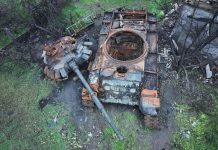On 8 December 2022, Saab announced that they had received an order from the United Kingdom Ministry of Defence (MoD) for additional Next Generation Light Anti-Tank Weapon (NLAW) systems. The order is valued at approximately SEK 2.9 Bn (EUR 265 M), and deliveries are due to take place from 2023 to 2026.
NLAW is a shoulder-launched anti-tank weapon with an effective range of approximately 20-600 m, capable of overfly top-attack (OTA) and direct attack trajectories. It is armed with a single downward-firing high explosive anti-tank (HEAT) warhead. The warhead can be activated either by a proximity fuze (when launched on an OTA trajectory), or by an impact fuze (when launched on a direct attack trajectory). The rocket is soft-launched by a very short-burn boost motor which simply moves it to a safe distance from the operator. This arrangement allows the weapon to be used from within enclosed spaces. Once the rocket has left the barrel and is clear of the operator, the short-burn sustain motor ignites and provides sufficient power for the rocket to reach its maximum range.

The rocket is unguided in flight, but the launcher is equipped with a predicted line-of-sight (PLoS) functionality within its sighting system, which assists the gunner with engaging moving targets. This works by the gunner tracking the target for 2-3 seconds, and the sight’s software calculating an adjusted point of aim to compensate for the target’s motion. Alternatively, it can simply be used in direct line-of-sight mode, such as when engaging static targets.
The PLoS aiming functionality has been claimed to effectively make the weapon ‘fire and forget’. In a strict sense this is not quite the case, since unlike projectiles which are guided in flight, there are no means for correcting the shot once it has left the barrel. Having said this, given the relatively short typical ranges the weapon is intended to operate at, and hence very short flight times, there are unlikely to be many tactical scenarios where this would realistically pose a significant problem. As such, in practice it can be effectively considered ‘fire-and-forget’ for most realistic tactical scenarios.
MC












